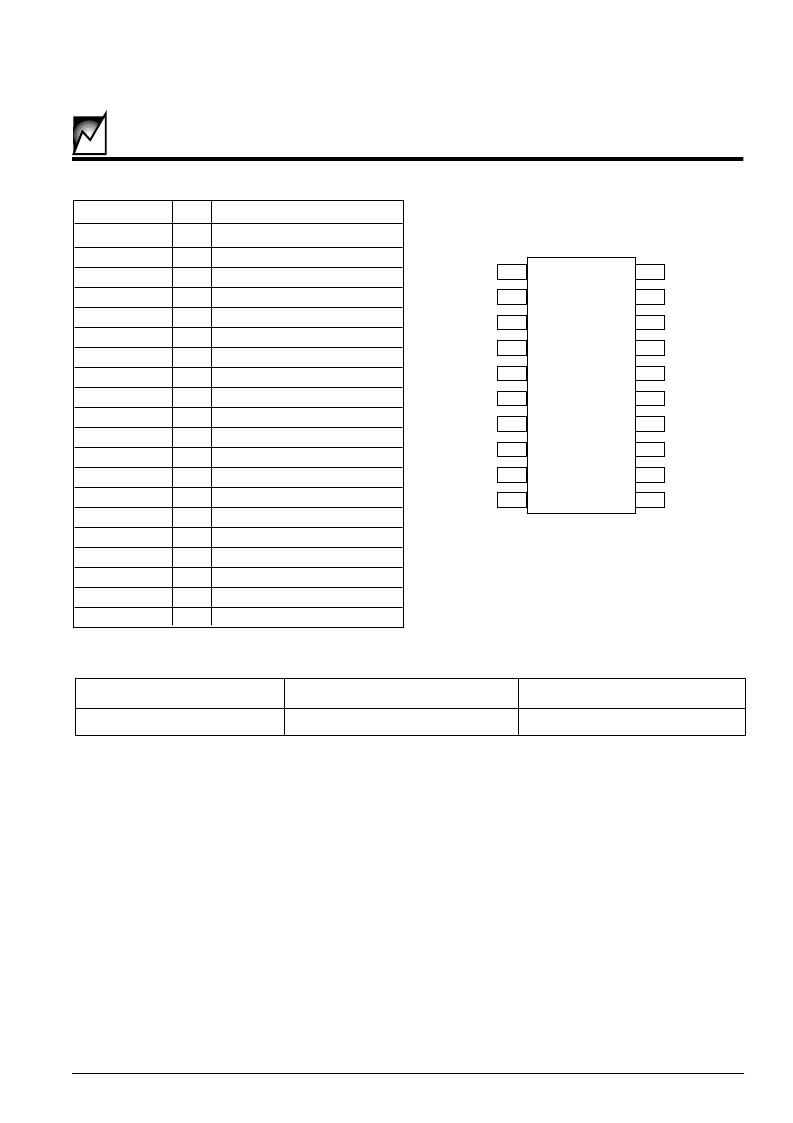- 您現在的位置:買賣IC網 > PDF目錄373424 > SMH4803AEKP (Summit Microelectronics, Inc.) Distributed Power Hot-Swap Controller PDF資料下載
參數資料
| 型號: | SMH4803AEKP |
| 廠商: | Summit Microelectronics, Inc. |
| 元件分類: | 基準電壓源/電流源 |
| 英文描述: | Distributed Power Hot-Swap Controller |
| 中文描述: | 分布式電源熱插拔控制器 |
| 文件頁數: | 2/22頁 |
| 文件大小: | 184K |
| 代理商: | SMH4803AEKP |

2
SMH4803
2041 8.4 6/15/00
SUMMIT MICROELECTRONICS
Symbol
Drain Sense
Vgate
EN/TS
PD1#
PD2#
CBFault#
CBReset#
CBMode
CBSense
Vss
UV
OV
5V
2.5V
ENPGB
ENPGA
PG3#
PG1#
PG2#
Vdd
Pin
1
2
3
4
5
6
7
8
9
10
11
12
13
14
15
16
17
18
19
20
Description
Drain sense input
Output to MOSFET gate
Enable/Temp Sense input
Pin Detect 1 (active LO)
Pin Detect 2 (active LO)
Circuit Breaker Fault output
Circuit Breaker Reset intput
Circuit Breaker Mode control
Cicruit Breaker Sense input
Negative Supply Connection
Under Voltage input
Over Voltage input
5V reference output
2.5V reference output
Enable input B
Enable input A
Power good output 3
Power good output 1
Power good output 2
Positive supply connection
2041 PGM T2.1
PIN CONFIGURATIONS
RECOMMENDED OPERATING CONDITIONS
Condition
Min
Max
Temperature
-40
°
C
+85
°
C
2041 PGM T3.0
1
2
3
4
5
6
7
8
9
10
16
15
14
13
12
11
19
20
17
18
2041 ILL10.1
Drain Sense
Vgate
EN/TS
PD1#
PD2#
CBFault#
CBReset#
CBMode
CBSense
Vss
Vdd
PG2#
PG1#
PG3#
ENPGA
ENPGB
2.5V
5V
OV
UV
DESCRIPTION
The SMH4803 is designed to control hot swapping of
plug-in cards operating from a single supply ranging from
20V to 500V. The SMH4803 hot-swap controller provides
under-voltage and over-voltage monitoring of the host
power supply, it drives an external power MOSFET switch
that connects the supply to the load, and also protects
against over-current conditions that might disrupt the host
supply. When the input and output voltages to the
SMH4803 controller are within specification, the
SMH4803 provides three
“
Power Good
”
logic outputs that
may be used to turn ON the loads, e.g. isolated-output DC-
DC converters, or drive LED status lights. The SMH4803
provides three separate
“
Power Good
”
logic outputs that
activate loads in a timed sequence. Additional features of
the SMH4803 include: temperature sense or master en-
able input, 2.5V and 5V reference outputs for expanding
monitor functions, two
“
Pin-Detect
”
enable inputs for fault
protection, and duty-cycle or latched over-current protec-
tion modes.
相關PDF資料 |
PDF描述 |
|---|---|
| SMH4803AEL | Distributed Power Hot-Swap Controller |
| SMH4803AELP | Distributed Power Hot-Swap Controller |
| SMH4803AEM | Distributed Power Hot-Swap Controller |
| SMH4803AEMP | Distributed Power Hot-Swap Controller |
| SMH4803AEN | Distributed Power Hot-Swap Controller |
相關代理商/技術參數 |
參數描述 |
|---|---|
| SMH4803AEL | 制造商:SUMMIT 制造商全稱:SUMMIT 功能描述:Distributed Power Hot-Swap Controller |
| SMH4803AELP | 制造商:SUMMIT 制造商全稱:SUMMIT 功能描述:Distributed Power Hot-Swap Controller |
| SMH4803AEM | 制造商:SUMMIT 制造商全稱:SUMMIT 功能描述:Distributed Power Hot-Swap Controller |
| SMH4803AEMP | 制造商:SUMMIT 制造商全稱:SUMMIT 功能描述:Distributed Power Hot-Swap Controller |
| SMH4803AEN | 制造商:SUMMIT 制造商全稱:SUMMIT 功能描述:Distributed Power Hot-Swap Controller |
發(fā)布緊急采購,3分鐘左右您將得到回復。